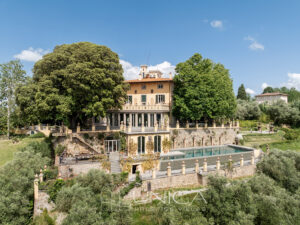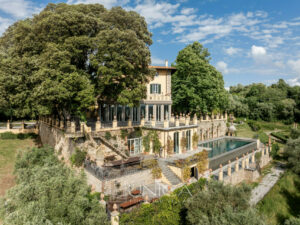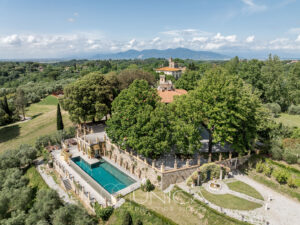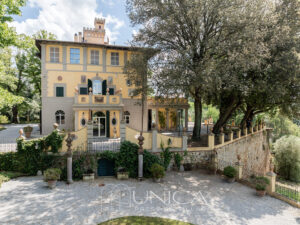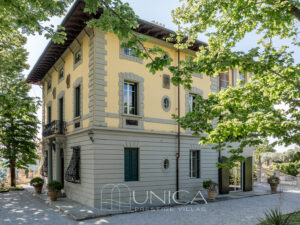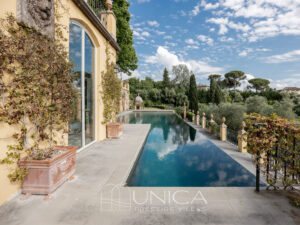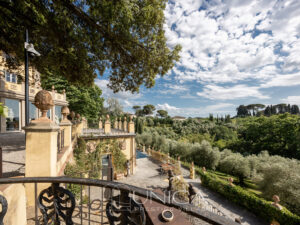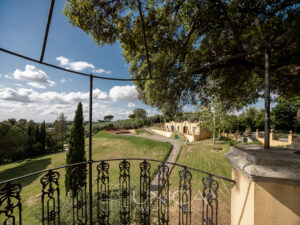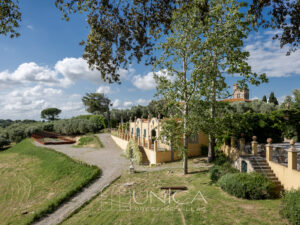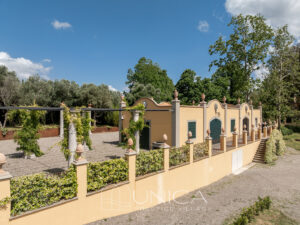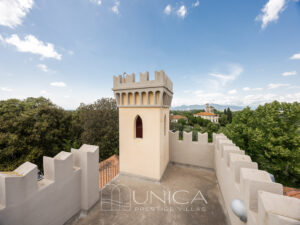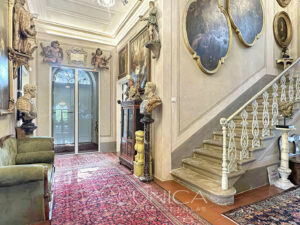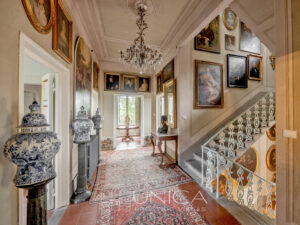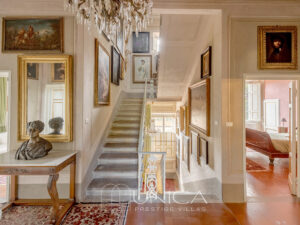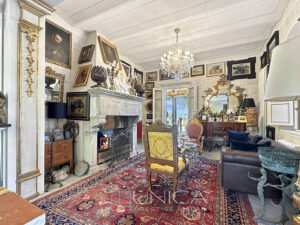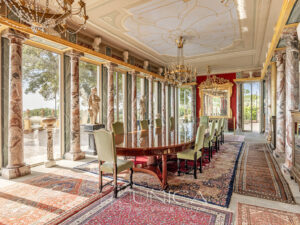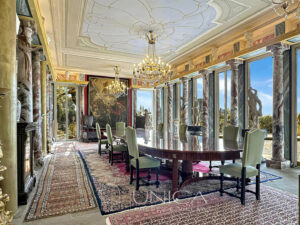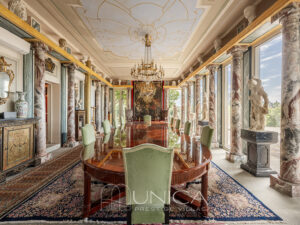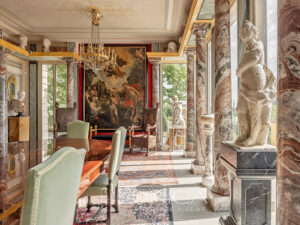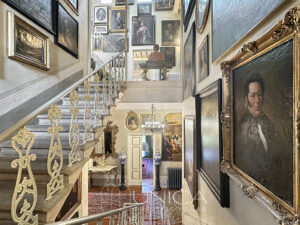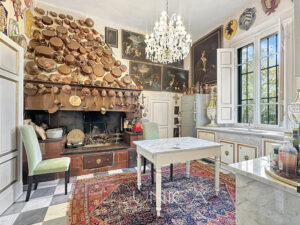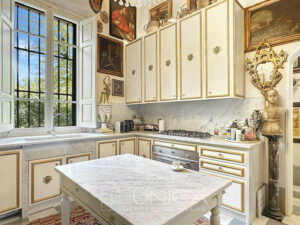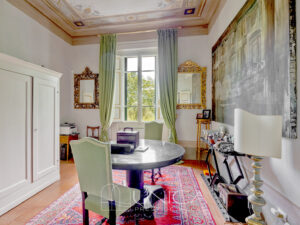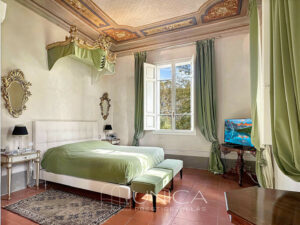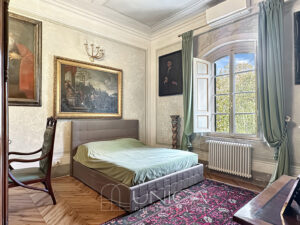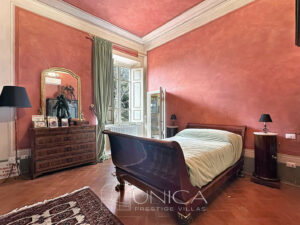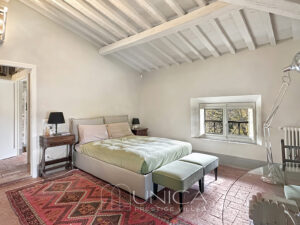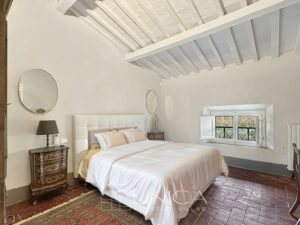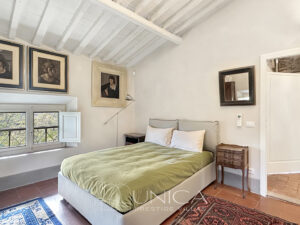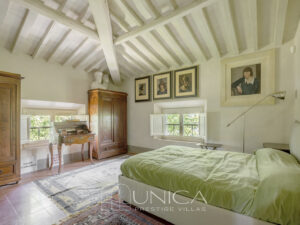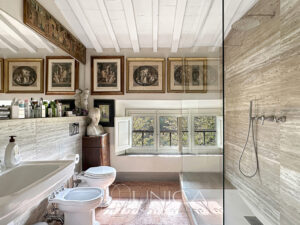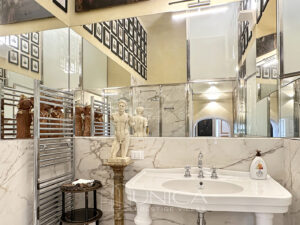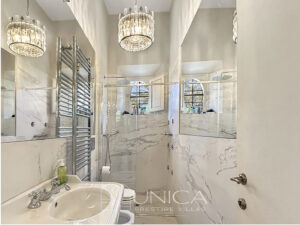
Tenuta Eugenia
On the Pisan Hills, Crespina still preserves the elegance of the holiday retreats of times past. Already at the end of the seventeenth century, the noble families of Pisa and Livorno chose these heights to build villas, farms and hunting lodges, drawing a landscape of residences immersed in greenery.
In the mid-nineteenth century, the owners’ houses became true artistic salons: among the protagonists, the Macchiaioli, including Augusto Ray, who — in love with the daughter of the Sala family — chose to erect this villa exactly opposite their residence, making the place itself a tribute of love.
Today as then, the quiet rhythm of the countryside and the measure of the landscape restore a rare harmony, where history and beauty continue to speak to each other with ease.
An unspoiled countryside, chosen over time also by prominent figures such as Andrea Bocelli, where the breath of nature meets precious conveniences: just 25 km from Pisa Airport, 30 km from the port of Livorno, with Florence and Forte dei Marmi reachable in less than an hour.
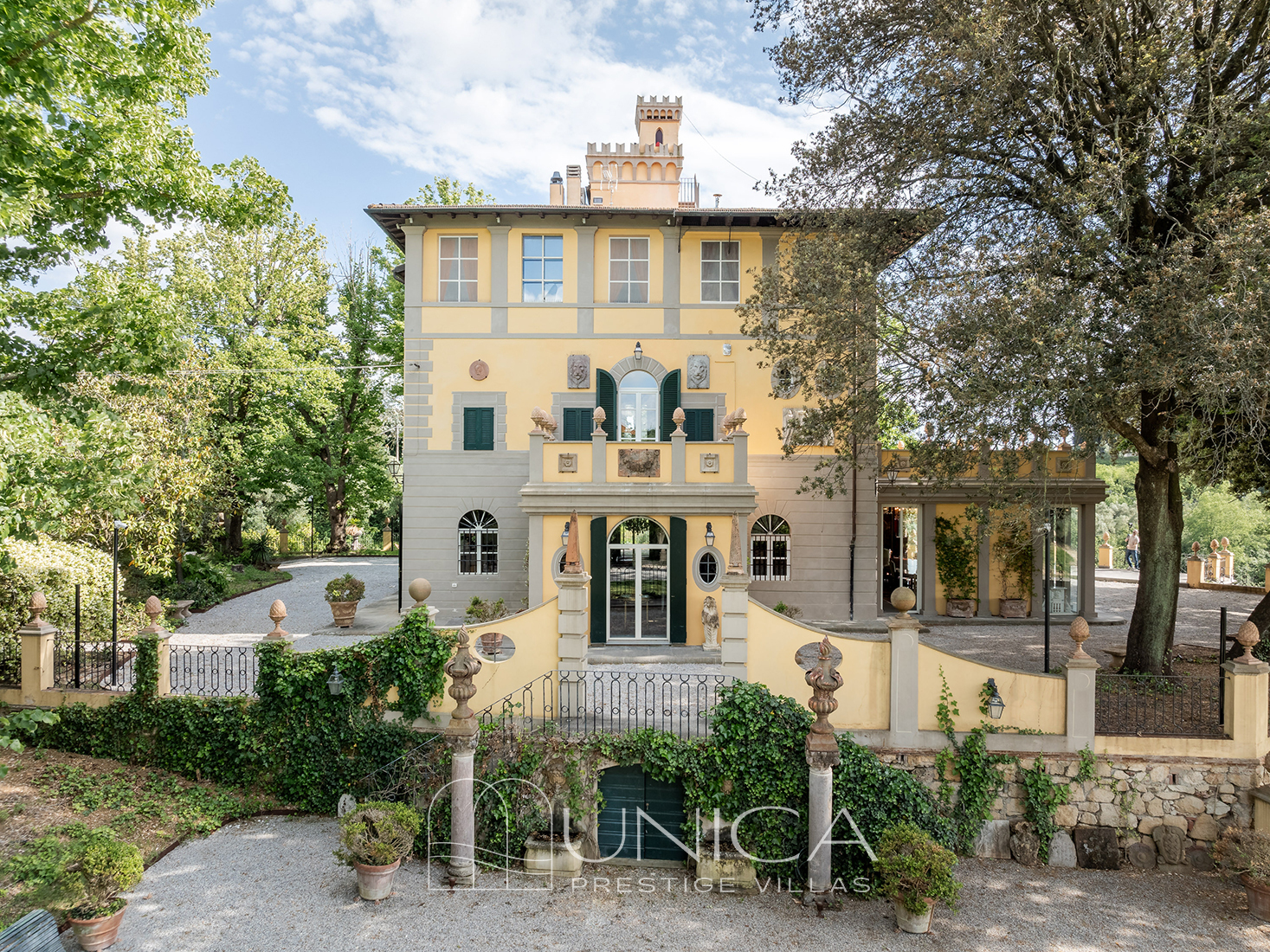
The estate, which extends over 32 hectares, is reached by three access points: one directly beside the principal façade; a second, nearby, opening onto the forecourt in front of the Stables with its grand fountain; and a third, the more scenic internal route, punctuated by columns and statues.
The façade catches the eye with its honey-colored plaster, pietra serena rustication, monumental fan-shaped staircase and balustrades adorned with terracotta pine cones: a balance of elegance and classical proportions.
On the side of the residence opens the infinity stone pool (ca. 20 × 6.5 m, depth 2.5 m), a blade of water suspended over the terraces that reflects the light and the landscape. Around it, the stone solarium, balustrades with pinecone finials and the colonnade create a theatrical scenic backdrop.
Beside the pool, the dining terrace hosts a table for 18 guests, while on the lower level, connected by stone stairways, a lounge area with sofas and low tables opens up, intimate and overlooking the olive trees.
The park alternates the precision of Italian-style avenues and flowerbeds with the softness of English-style clearings, offering settings that change with the light. The historic Vigna Christi (ca. 2.5 ha, cited in the Leopoldine Land Registry of 1825) and an olive grove of about 800 trees tell of the property’s agricultural vocation, completed by woods and arable land. Three small lakes dot the landscape, reflecting the villa along the paths.
Next to the residence stands the Stables, now converted into a hall for parties and conferences; in addition to the main hall, two bathrooms and a bedroom extend its functionality. Opposite, the approximately 300 sq m limonaia, completed in 2024, is designed for receptions and large tables, with wide openings onto the greenery.
Three parking areas accommodate up to 100 vehicles, perfectly integrated into the park’s design.
Two historic residences complete the estate: to the south Villa Santernetti (eighteenth century, frescoes by Giovanni Tempesti, approved restoration project) and to the north Villa Torre Alta del Bugallo (frescoes by Pietro and Giuseppe Della Valle), both awaiting restoration.
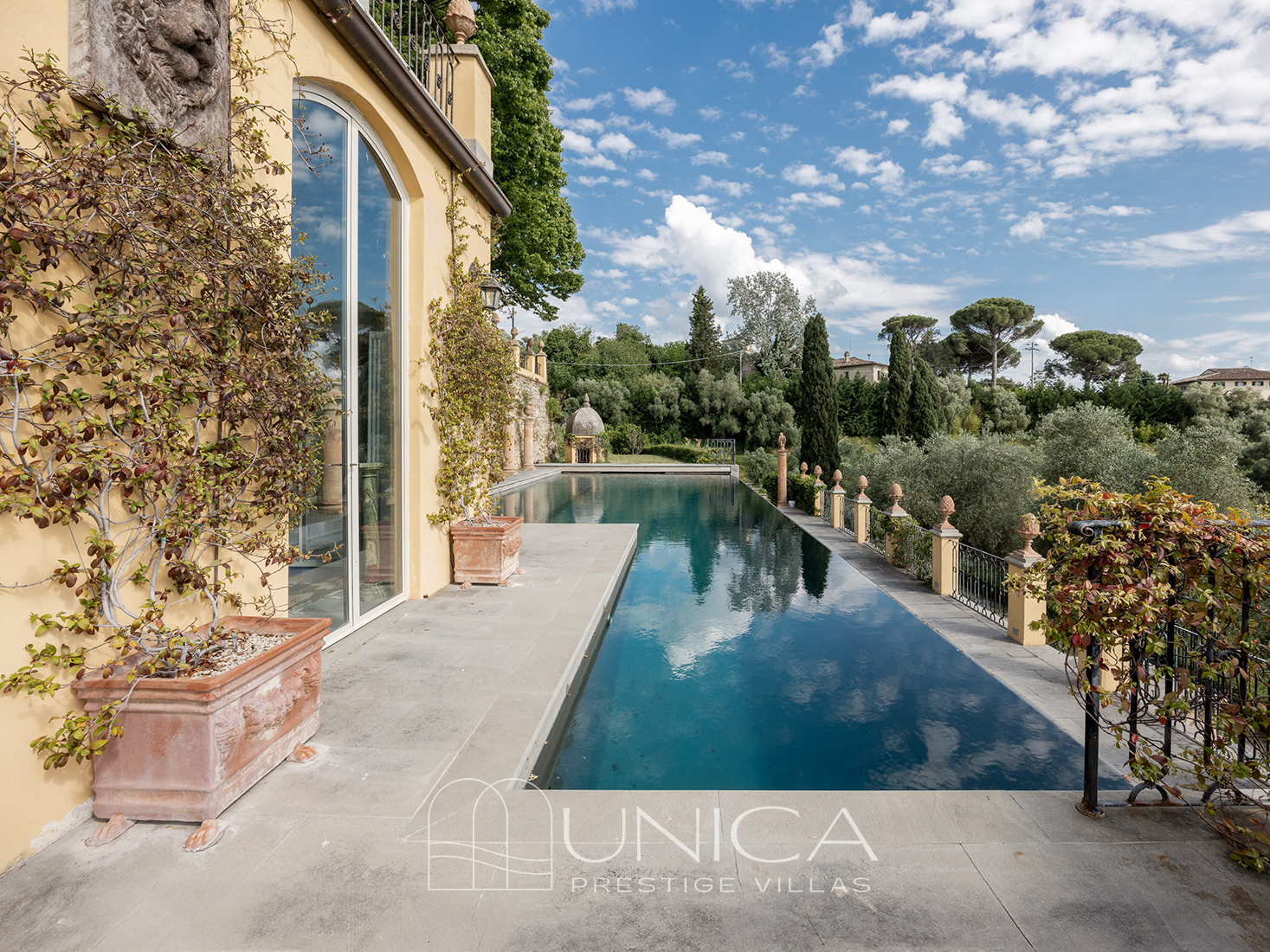
The Main Villa, erected and decorated in 1895 by the Macchiaioli painter Augusto Ray and completely restored in 2022, unfolds over four levels for about 1,000 sq m.
The double entrance leads into a gallery almost twenty meters long, from which one accesses the library, where the ceilings frescoed by the artist and two sofas gathered at the center create an atmosphere of calm, designed for reading and conversation.
From here opens the Hall of Columns, where the rhythm of the marble columns frames the space. The full-height windows open onto the belvedere terrace, letting in the countryside and, lower down, the reflection of the pool.
Beneath the crystal chandeliers, among antique rugs and gilded mirrors, a table for 28 guests dominates the scene: it is the reception room, when the light turns golden and the countryside seems to join the dinner.
The enfilade of reception rooms continues into the double living room: the first room, with original stone fireplace in perfect working order; the second, larger, is lit by a large French window opening onto the garden.
The kitchen still preserves its ancient heart: a large fireplace with copper cladding and a striking collection of cookware.
Opposite, a second, more intimate dining room with frescoed ceilings is the ideal setting for everyday life.
On the piano nobile lies the master suite with sitting room with fireplace, private study and en suite bathroom, flanked by two double bedrooms, also with en suite bathrooms. A large terrace with lounge area extends the interiors toward the landscape.
The second floor houses four bedrooms and four bathrooms; the artist’s former atelier is now a home theatre of about 60 sq m, with projector, large screen and Dolby Surround system.
An internal staircase leads to the turret with a 360° belvedere over villages, vineyards and olive groves; on the clearest days, the sea can be glimpsed on the horizon.
On the basement level takes shape the wellness area, faithful to the villa’s classical language: changing room, bathroom, Finnish sauna and indoor pool heated to 37 °C with high-pressure hydromassage and Roman waterfall. A glazed door creates continuity between the indoor pool and the outdoor infinity pool, for a single gesture of water between stone and greenery.
Everywhere, terracotta, stone and marble, boiserie and fireplaces dialogue with recent systems, double glazing and air-conditioned rooms. The complex includes, in addition to the restored villa, two other dwellings, for a total built area of about 4,000 sq m.
Energy Efficiency Class: G
Exterior
-
Outdoor shower
-
Vineyard
-
Olive grove
-
Garden
-
Internal Parking
-
Swimming pool
-
Terrace
In the villa
-
Fireplace
-
Alarm
-
Air conditioning
Entertainment
-
Indoor pool
-
Sauna
Other
-
Sea view
On the Pisan Hills, Crespina is a gentle countryside: soft hills, olive groves, orderly rows of vines, and cypress-lined avenues. Its history is ancient: a document from 983 attests to its existence; in 1115 it passed under Lucca, then under Pisa; in 1431, after an uprising, it was elevated to a Podesteria dependent on the Vicariate of Lari. Of the castle only memories remain, but between the eighteenth and nineteenth centuries the landscape was enriched with manor houses and holiday residences, so much so that already in the eighteenth century Crespina was described as “the most delightful part of the Pisan Hills”.
In the nineteenth century many residences became artistic salons, frequented by the Macchiaioli; among the names, Giovanni Fattori, Silvestro Lega, Telemaco Signorini, Luigi Gioli and Giorgio Kienerk. Even today the architecture tells of that atmosphere: Villa Belvedere (with oratory, English garden and limonaia), Villa Corsini Valdisonzi with its park and its two façades, Villa Il Poggio and the Carlo Pepi villa-museum, the only one currently open to visitors. It is a landscape of clear light and measured horizons, where the countryside retains a stately character.
The climate is mild and airy: the breezes that rise from the coastal plains and the small streams make summers lighter and winters temperate. These are ideal conditions for vineyards and olive groves. The wine tradition is documented as early as the Camaldolese Annals; today pleasant reds and whites are produced, and in nearby Cenaia specialized nurseries operate where young grapevines are grown for the region’s vineyards. The surrounding woods are rich in wild herbs and easy trails for walks or cycling.
Nearby, Pontedera is the go-to town for daily needs—shops and supermarkets, cafés and pastry shops—and the Piaggio Museum; from Pontedera–Casciana Terme station, frequent trains to Pisa and Florence make day trips easy.
SURROUNDINGS
From Crespina the world opens up naturally: 25 km from Pisa International Airport and 30 km from the port of Livorno, the quiet of the hills meets the convenience of quick departures toward Italy and the Mediterranean. The Versilia sea is close by; in less than an hour you arrive in Forte dei Marmi, with its orderly beaches, historic bathing establishments, boutiques along the seafront and that light atmosphere that invites slow days and elegant evenings.
A few kilometers are enough to change the scene. Pisa welcomes with the magic of Piazza dei Miracoli — the Leaning Tower, the Cathedral and the Baptistery — and with the Lungarni, where historic palaces are reflected in the river. Lucca is an embrace of intact Renaissance walls to be walked or cycled along: inside, Piazza dell’Anfiteatro, the Guinigi Tower and an interweaving of churches and quiet streets. Florence, heart of the Renaissance, offers the power of Brunelleschi’s Dome, the Uffizi, Ponte Vecchio and an unrivaled sequence of palaces and museums.
In this compact geography, the day can begin among rows of vines and olive trees, continue between art and sea, and end in the silence of the hills: everything is within reach, without giving up the serenity of the countryside.
Request information
Fill out the form to request availability in your preferred period. If you have other needs, write to us and we will find the perfect solution for you!
